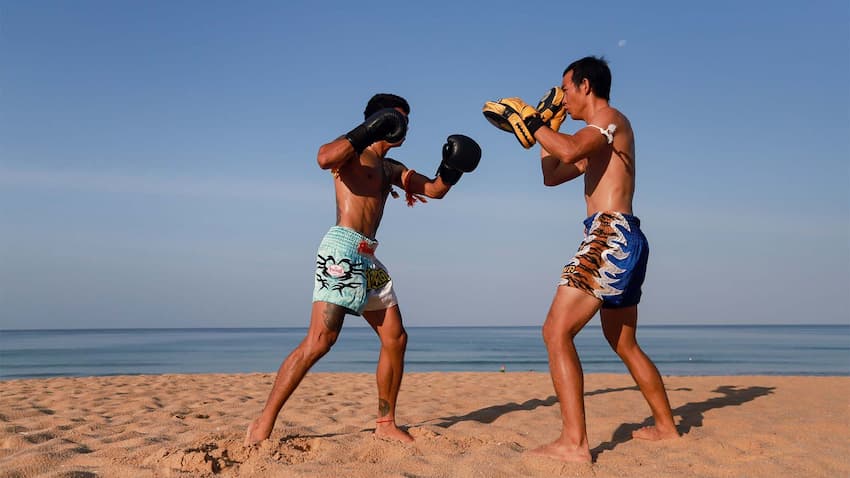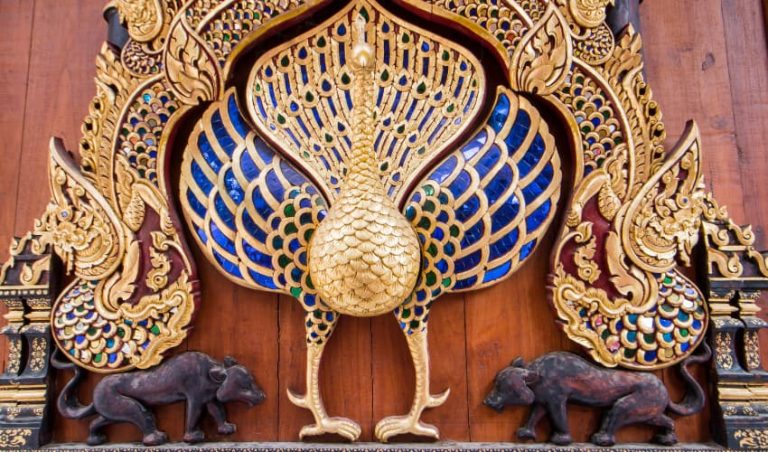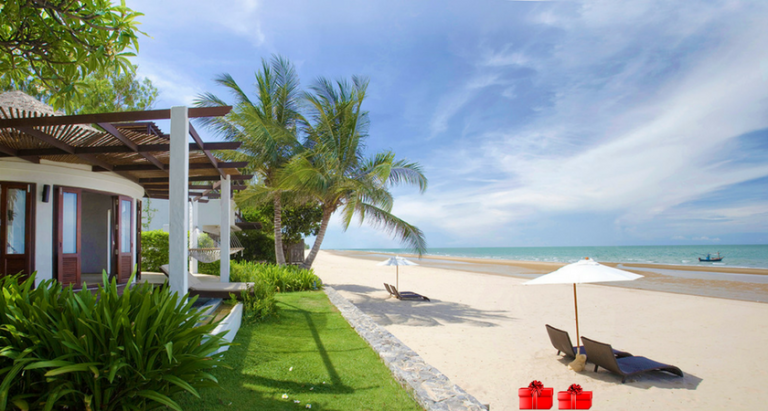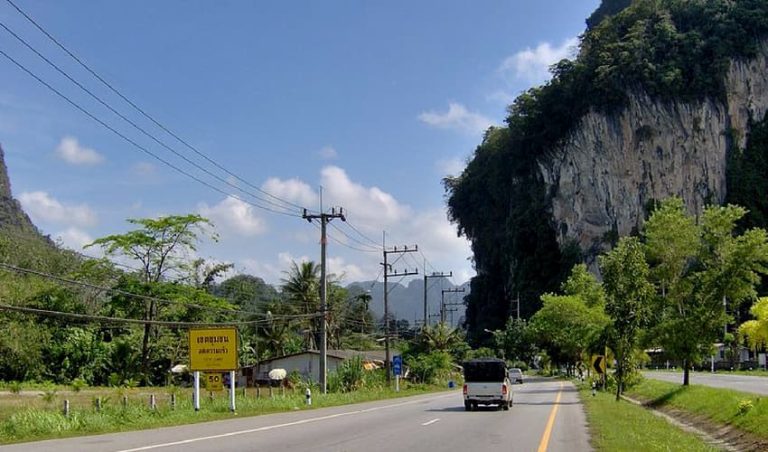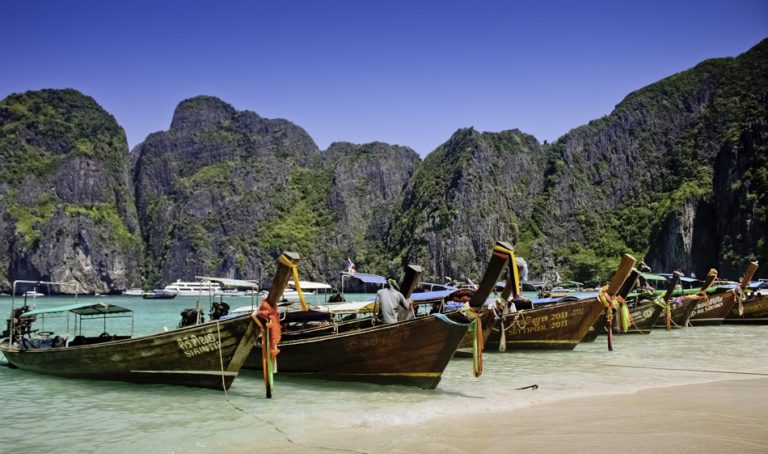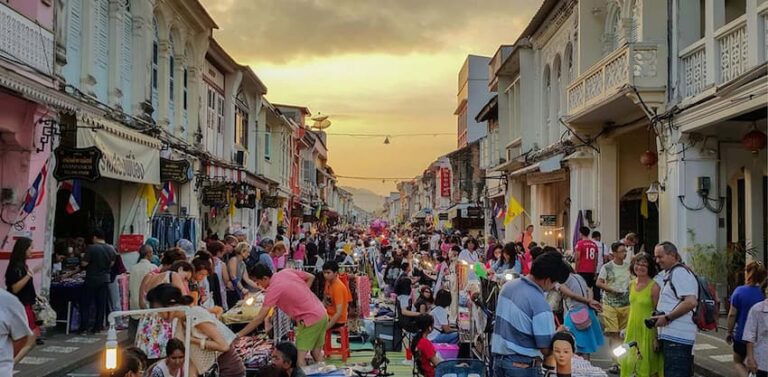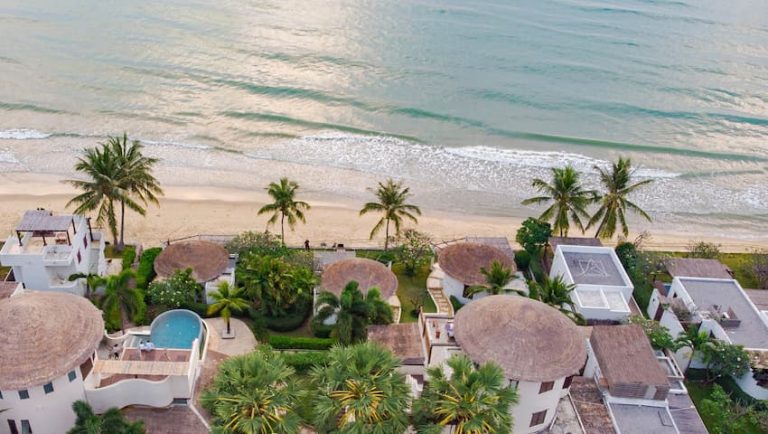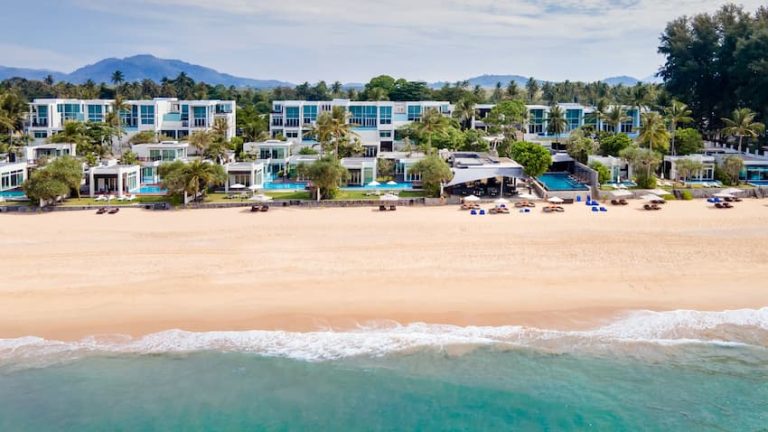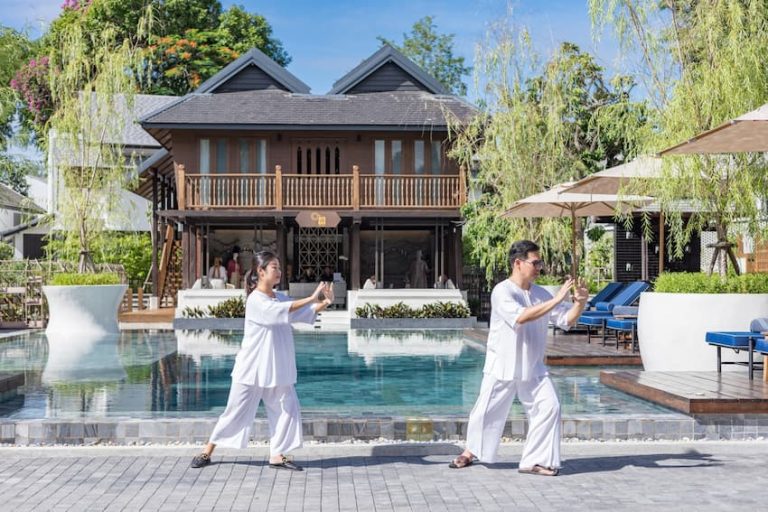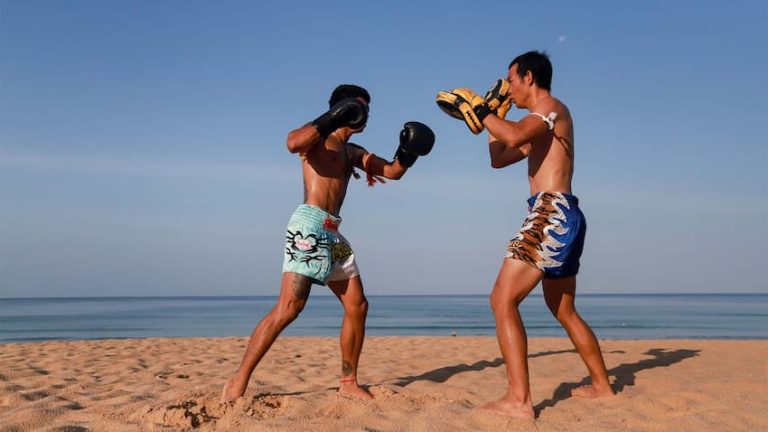Muay Thai, often referred to as “Thai Boxing” or the “Art of Eight Limbs,” boasts a storied history that traces back centuries in Thailand. Initially developed for soldiers as a form of close combat that utilised the entire body as a weapon, Muay Thai has evolved from its martial roots on the battlefield to become Thailand’s national sport and a globally respected martial art. The name itself encapsulates the essence of the sport—using fists, elbows, knees, and shins for striking, making the practitioner an efficient combatant with eight points of contact.
More than just a sport, Muay Thai is deeply ingrained in Thai culture, symbolising the spirit of perseverance, courage, and discipline. It reflects the historical significance of self-defence and military training in ancient Thai kingdoms. Muay Thai is also intertwined with spiritual and cultural practices; fighters perform the “Wai Kru Ram Muay” before each bout, a ceremonial dance that respects their trainers, the sport’s traditions, and the spiritual beliefs underpinning Thai society. This ritual showcases practitioners’ profound respect and dedication for Muay Thai, emphasising its cultural depth beyond physical combat.
Muay Thai focuses on striking and clinching techniques as a martial art, offering a comprehensive full-body workout that improves strength, agility, and endurance. Its training regimen is demanding, fostering not only physical toughness but mental fortitude as well. In the sporting arena, Muay Thai is celebrated for its intense and electrifying matches, governed by rules that ensure fair competition and the safety of fighters. Competitors of all levels—from local gym fights to international competitions—demonstrate the art’s dynamic techniques and the strategic use of strikes to outmanoeuvre opponents. The global spread of Muay Thai has not only introduced its rigorous training methods to a broader audience but has also shared a piece of Thai culture, making it a revered art form worldwide.
The Basics of Muay Thai
Muay Thai is often hailed as the “Art of Eight Limbs” due to its utilisation of eight points of contact, diverging from the four points (fists and feet) used in many other combat sports. This moniker reflects the comprehensive approach to striking that defines Muay Thai, where practitioners employ fists, elbows, knees, and shins to execute various attacks. This method transforms the fighter’s body into a multifaceted weapon, allowing for a broad range of striking and clinching techniques. The philosophy behind this approach is not just about offence but also incorporates defence, leveraging these points of contact to block, parry, and neutralise opponents’ attacks.
The foundation of effective Muay Thai technique begins with the proper stance and footwork, which ensure balance, mobility, and readiness to strike or defend. The basic Muay Thai stance is sturdy and dynamic, with the body slightly side-on to minimise the target area exposed to an opponent. Practitioners keep their feet shoulder-width apart, with the lead foot pointing forward and the rear foot at a forty-five-degree angle for stability and quick movement.
Footwork in Muay Thai is crucial for controlling distance, positioning for attacks, and evading strikes. Mastery of advancing, retreating, and lateral movement allows fighters to dictate the pace of the bout, manoeuvre into advantageous positions, and deploy strikes with precision. Proper footwork is not just about movement but also forms the basis for generating power in strikes and maintaining a defence against attacks.
Training in Muay Thai requires specific equipment designed to protect practitioners and facilitate skill development. The most fundamental piece of gear is the Muay Thai gloves, which differ from traditional boxing gloves in design to accommodate the clinch work integral to the sport. Shin guards are another essential gear, protecting the legs during kicking drills and sparring sessions.
Hand wraps support the wrists and knuckles, absorbing impact to prevent injury. Headgear and mouthguards offer additional protection during sparring, safeguarding against concussive blows and dental injuries. For practising strikes, Muay Thai gyms are equipped with heavy bags, pads, and speed bags that simulate the resistance and feedback of hitting an opponent, allowing fighters to hone their techniques with repeated practice.
Techniques and Strategies of Muay Thai
Muay Thai’s diverse arsenal of strikes is central to its effectiveness as a martial art and combat sport. The primary strikes include punches, kicks, elbows, and knees, each offering unique advantages and applications in combat.
Punches:
Borrowing from western boxing, Muay Thai incorporates jabs, crosses, hooks, and uppercuts. These techniques are adapted to fit the stance and movement patterns of Muay Thai, allowing for fluid transitions into elbow strikes and clinches.
Kicks:
Muay Thai’s legwork is formidable, and the roundhouse kick is a hallmark of the sport. Kicks can target the legs, body, or head and are executed with the shin rather than the foot for maximum impact. Teeps, or push kicks, serve both offensive and defensive purposes, maintaining distance or unbalancing an opponent.
Elbows:
Elbow strikes in Muay Thai are close-range weapons capable of causing significant damage and cuts. Techniques include horizontal, vertical, diagonal, and spinning elbows. Using elbows requires precision and timing, making them a sophisticated element of Muay Thai striking.
Knees:
Knee strikes are powerful tools in Muay Thai, used both in the clinch and from a distance. Straight knees, curved knees, and flying knees are among the variants practitioners use to target an opponent’s body and head, leveraging body weight and momentum for force.
The Clinch in Muay Thai
The clinch in Muay Thai distinguishes it from other striking arts. It involves grappling with the opponent using the hands, arms, and shoulders to control their movement and posture. The clinch is not merely a way to neutralise an opponent’s attacks but an offensive position to launch knees, elbows, and sweeps. Mastery of the clinch requires strength, endurance, and a deep understanding of balance and leverage. Clinching allows fighters to dictate the pace of the encounter, close the distance safely, and execute strikes that are difficult to defend against.
Defence in Muay Thai is as nuanced and varied as its offensive techniques. Practitioners employ a range of defensive manoeuvres to protect against strikes:
Blocks and Checks:
For kicks and knee strikes, fighters use their shins and forearms to block attacks, absorbing the impact on stronger parts of their body. Checks involve lifting the leg to intercept and neutralise incoming kicks.
Parries and Deflections:
Punches and some elbow strikes can be parried or deflected, redirecting the force away from the defender. This requires precise timing and an understanding of the opponent’s intentions.
Evasive Movements:
Footwork and body movement are essential for evading strikes. This includes stepping out of range, pivoting, ducking, and weaving. In Muay Thai, evasiveness is not about passivity but setting up counterattacks and controlling the fight space.
Training Session for Beginners
A Muay Thai training session for beginners is meticulously structured to build foundational skills, improve fitness, and instil discipline. It usually follows a pattern that encompasses various aspects of the sport, ensuring a comprehensive workout:
Warm-Up:
A session begins with a warm-up, often involving skipping rope, jogging, or dynamic stretching. This prepares the body for intense physical activity and reduces the risk of injury.
Technique Drills:
After warming up, beginners focus on technique drills, including stances, footwork, and basic strikes (punches, kicks, elbows, and knees) against pads or heavy bags. This is crucial for developing proper form and understanding the mechanics of each technique.
Pad Work:
Pad work with a partner or instructor is a staple of Muay Thai training. It helps students learn timing, distance, and power application in a controlled environment, receiving immediate feedback.
Clinching Practice:
Although more advanced, beginners are gradually introduced to the clinch. Initial practice might focus on essential positioning and control, emphasising balance and strength.
Conditioning:
Strength and conditioning exercises are integrated to build Muay Thai’s physical attributes, including endurance, power, and agility. These might involve bodyweight exercises, circuit training, or plyometrics.
Cool Down:
Sessions end with a cool down to help the body recover. Stretching exercises are emphasised to increase flexibility and reduce muscle stiffness.
Physical and Mental Benefits of Practicing Muay Thai
Practising Muay Thai offers a myriad of benefits beyond physical conditioning:
Physical Health:
Regular training improves cardiovascular health, muscle tone, flexibility, and agility. It’s an excellent way to manage weight and enhance overall physical fitness.
Mental Toughness:
Muay Thai challenges individuals to push beyond their limits, fostering mental resilience. The discipline and focus required translate to other areas of life, enhancing one’s ability to handle stress and adversity.
Self-Defence Skills:
Muay Thai equips practitioners with practical self-defence techniques, boosting confidence in their ability to protect themselves.
Cultural Appreciation:
Engaging in Muay Thai offers insight into Thai culture and traditions, promoting a greater understanding and respect for the art’s origins.
Tips for First-Time Muay Thai Students
For those embarking on their Muay Thai journey, here are some tips to navigate the initial stages:
Be Patient:
Mastery takes time. Focus on learning the fundamentals before progressing to more complex techniques.
Stay Open-Minded:
Be willing to listen, learn, and accept constructive criticism. Every correction is an opportunity for improvement.
Prioritize Safety:
Wear appropriate gear, including gloves, shin guards, and mouthguards during sparring sessions to prevent injuries.
Hydrate and Eat Well:
Proper nutrition and hydration are essential to sustain energy levels and recover from training sessions.
Rest and Recover:
Allow your body time to rest and recover. Overtraining can lead to burnout and injuries.
The Spiritual and Cultural Aspect of Muay Thai
Muay Thai is much more than a combat sport; it is deeply woven into the fabric of Thai culture, embodying a rich spiritual and cultural heritage that transcends the physical aspects of the martial art.
One of the most distinctive elements of Muay Thai is the Wai Kru Ram Muay ceremony, a ritual performed by fighters before a match begins. This ceremonial dance serves multiple purposes: a warm-up for the fighters, a demonstration of respect to their trainers, ancestors, and the sport itself, and a way to ward off evil spirits. “Wai” is an act of respect demonstrated by the traditional Thai greeting, and “Kru” means teacher. “Ram” signifies dance, and “Muay” refers to boxing. Thus, the entire term can be translated as a dance of homage to one’s teacher. Each movement in the dance has meaning, from paying respect to the four directions of the earth to mimicking ancient warriors in battle, symbolising the fighter’s readiness and respect for the traditions of Muay Thai.
Muay Thai instils several core values in its practitioners: respect and discipline. The rigorous training regimen demands physical and mental discipline, teaching students the value of hard work, persistence, and dedication. Respect is foundational in Muay Thai, not just for teachers and fellow practitioners but also for opponents. This fosters a sense of community and mutual support among practitioners, emphasising the importance of humility and honour in all aspects of life.
The sport also cultivates courage, self-confidence, and a sense of responsibility, encouraging fighters to face challenges and advocate for themselves and others. These values are applicable not only within the confines of the gym or the ring but extend to daily life, shaping respectful, disciplined, and confident individuals.
Muay Thai holds a place of honour in Thai festivals and celebrations, often featured as a highlight of such events. During traditional Thai festivals, Muay Thai exhibitions and matches are commonly held, showcasing the sport’s cultural significance and entertaining attendees. These events serve as a way to preserve and celebrate the rich heritage of Muay Thai, passing down its traditions and values to future generations.
Moreover, Muay Thai competitions during these festivals are not just about the fight; they celebrate Thai culture, with dancers, musicians, and other cultural performances taking place alongside the matches. This integration of sport and culture highlights the deep connection between Muay Thai and Thai identity, celebrating the martial arts’s history and role in shaping Thailand’s cultural landscape.
Muay Thai Equipment and Gear
Having the right equipment and gear is not just about functionality and protection; it’s also profoundly intertwined with respect for the art form.
Gloves
Muay Thai gloves are designed to protect both the wearer and the opponent from injuries during training and matches. Unlike traditional boxing gloves, Muay Thai gloves are more flexible, accommodating clinching and grabbing techniques crucial to the sport. They typically range from 8 to 16 ounces, with heavier gloves for training to improve arm strength and endurance and lighter gloves for competition. Quality gloves should offer ample wrist support, cushioning around the knuckles, and a snug fit that doesn’t restrict movement.
Shorts
Muay Thai shorts are an iconic part of the attire. They are known for their vibrant designs and shorter cuts, which allow for a greater range of motion. Traditional shorts are made from lightweight and durable materials like satin or nylon to keep fighters cool and comfortable during intense bouts. The design often includes wide-leg openings to maximise flexibility for high kicks and knee strikes. Muay Thai shorts serve a functional purpose and carry cultural significance, with many featuring traditional Thai patterns and symbols.
Shin Guards
Shin guards are critical equipment for anyone practicing Muay Thai, from beginners to seasoned fighters. They protect the shins during kicks against pads, heavy bags, and sparring sessions, reducing the risk of injury to both the practitioner and their partner. Good shin guards should offer comprehensive coverage from the top of the shin down to the instep and a secure fit that doesn’t shift during movement. They are typically made from leather or synthetic materials and padded with foam to absorb impacts.
Additional Gear:
Hand Wraps:
Hand wraps are essential for wrist support and knuckle protection. They are worn under the gloves. They help tighten the fist during impact and prevent injuries.
Mouthguard:
A mouthguard is indispensable during sparring and competition to protect the teeth and reduce the risk of concussions.
Headgear:
While not always used in training, headgear is crucial for sparring, providing extra protection against head injuries.
Ankle Supports:
These provide stability and support for the ankles, which can be vulnerable during the dynamic movements of Muay Thai.
Groin Protector:
A must-have for male practitioners, offering protection against accidental low blows.
Muay Thai for Fitness and Self-defence
Muay Thai is a formidable discipline in the competitive realm, with a comprehensive fitness regimen and a practical approach to self-defence. Its holistic nature addresses physical conditioning and practical skills development in real-life situations.
Muay Thai’s rigorous training routines provide a full-body workout unmatched in cardiovascular health, strength, flexibility, and endurance. Here’s how:
Cardiovascular Health:
The intense pace of Muay Thai training, characterised by shadow boxing, pad work, and sparring rounds, significantly enhances cardiovascular endurance. Constant movement and exertion improve heart health and stamina.
Strength Building:
Muay Thai naturally builds muscle strength. Techniques like clinching require significant upper-body strength, while kicks and knee strikes strengthen the legs. Even the defensive movements in Muay Thai engage the core, ensuring a well-rounded development of muscular strength.
Flexibility and Agility:
High kicks, dodging, and weaving not only demand but also develop flexibility and agility. Regular stretching, an integral part of training, enhances the range of motion, reducing the risk of injuries and improving overall athletic performance.
Weight Management:
Muay Thai’s high intensity makes it an excellent tool for burning calories and fat and promoting healthy weight management. A single hour of training can burn upwards of 600-700 calories, depending on the intensity of the workout.
Beyond the physical benefits, Muay Thai equips practitioners with practical self-defence skills:
Striking Techniques:
Muay Thai’s comprehensive striking techniques, using fists, elbows, knees, and shins, offer multiple ways to defend oneself effectively in various situations. The ability to strike from different ranges and angles makes Muay Thai practitioners adaptable in confrontations.
Clinching for Control:
The clinch is not just a competitive strategy but a vital self-defence technique. It allows a person to control an opponent’s movements, neutralise their attacks, and create opportunities for counter-strikes. It’s beneficial in close-quarters defence.
Situational Awareness:
Muay Thai training cultivates situational awareness, which is crucial for self-defence. Practitioners learn to read body language, anticipate attacks, and react quickly and decisively.
Mental Resilience:
The mental fortitude developed through Muay Thai training, including confidence, calmness under pressure, and the determination to overcome challenges, is invaluable in self-defence scenarios. It fosters a not easily intimidated or panicked mindset, enabling precise, strategic responses to threats.
Trying Muay Thai at Aleenta Resorts
Aleenta Resort and Spa offers a unique opportunity to delve into Muay Thai, Thailand’s national sport and a revered martial art known as the “Art of the Eight Limbs.” With options ranging from a brief introduction to an immersive 7-day camp, Aleenta caters to beginners and those looking to deepen their practice amidst serene surroundings. Here’s what enthusiasts can expect:
1 Hour Introduction to Muay Thai
Overview:
This session is ideal for beginners and introduces the fundamental techniques of Muay Thai, including classic punches, kicks, knee strikes, and the defensive art of clinching.
Customized Training:
Recognising that guests have varying experience and fitness levels, Aleenta’s in-house prize-fighter customises the training to suit individual skills and capabilities, ensuring an inclusive and enriching experience for up to 10 participants.
Booking Details:
Interested guests are advised to make reservations at least 24 hours before the class to ensure availability.
7 Day Muay Thai Camp
Comprehensive Experience:
This transformative retreat is designed to offer a deep dive into Muay Thai, with multiple daily training sessions led by experienced instructors. Participants are introduced to a wide array of techniques while focusing on improving strength, flexibility, and endurance.
Personalised Instruction:
Training is tailored to meet the needs of participants at different skill levels, providing personalised attention and guidance to foster personal growth. In addition to physical training, the camp promotes mental discipline and offers additional wellness activities such as yoga, meditation, and massage to support overall well-being and recovery.
Participants can immerse themselves in Thai culture and connect with fellow Muay Thai enthusiasts through organised activities, excursions, and cultural experiences.
Accommodations:
The retreat package includes accommodations in Aleenta’s luxurious Grand Deluxe Pool Villa, enhancing the retreat experience with comfort and privacy.
Active Retreat at Aleenta Hua Hin Resort & Spa
Part of the ‘Active’ wellness retreat, this 3-day program includes a Muay Thai session and other physical activities like cycling and hiking. It encourages movement and exercise in the picturesque landscape of Aleenta Pranburi.
The retreat is ideally situated for guests to enjoy scenic bike tours along the coastal route and tranquil roads of Sam Roi Yot National Park and canoeing or stand-up paddleboarding for a holistic approach to fitness.
Whether you’re a novice eager to learn the basics or someone looking to enrich your practice in a supportive and inspiring environment, Aleenta’s Muay Thai offerings promise a blend of physical training, mental discipline, and cultural immersion against Thailand’s beautiful landscapes.
Related Articles
- 7 Day Muay Thai Experience in Phang Nga
- Holistic Health and Fitness Retreats on Natai Beach
- Mind Body Connection and Wellness on Natai Beach
- Yoga Retreats, Stretch Your Body and Mind
- Three-Day Retreat of Yoga and Mindfulness in Hua Hin
ALEENTA PHUKET RESORT & SPA
33 Moo 5, Khok Kloi,
Takua Thung, Phang Nga
82140 Thailand

